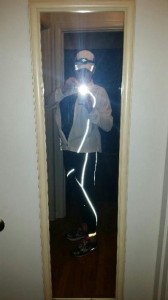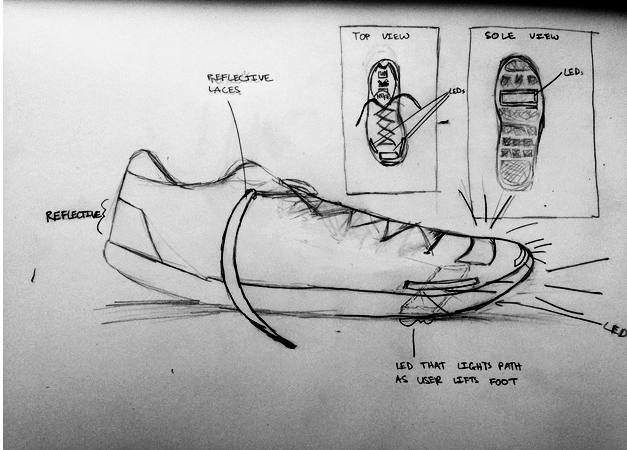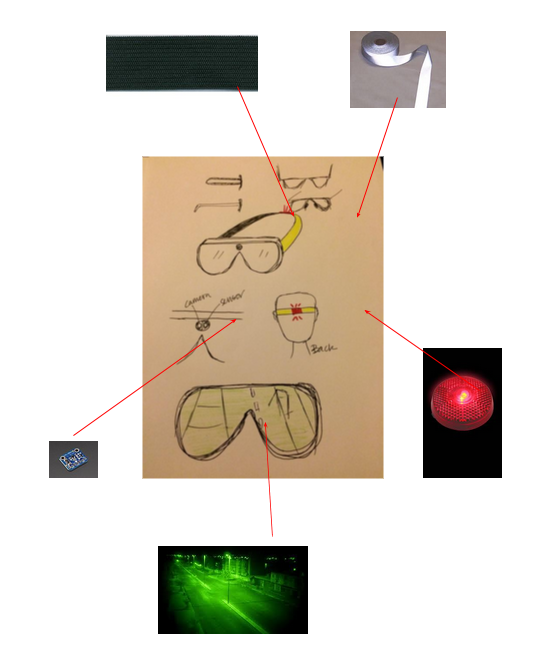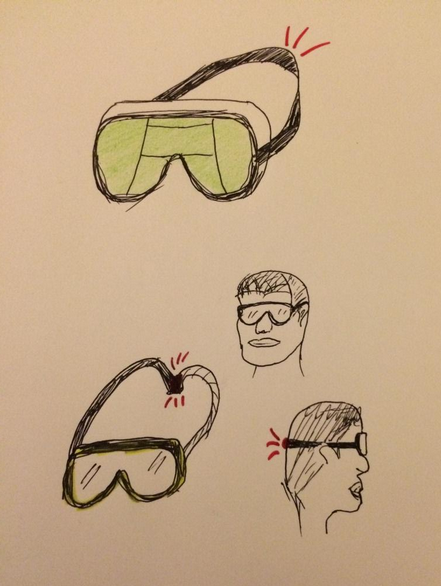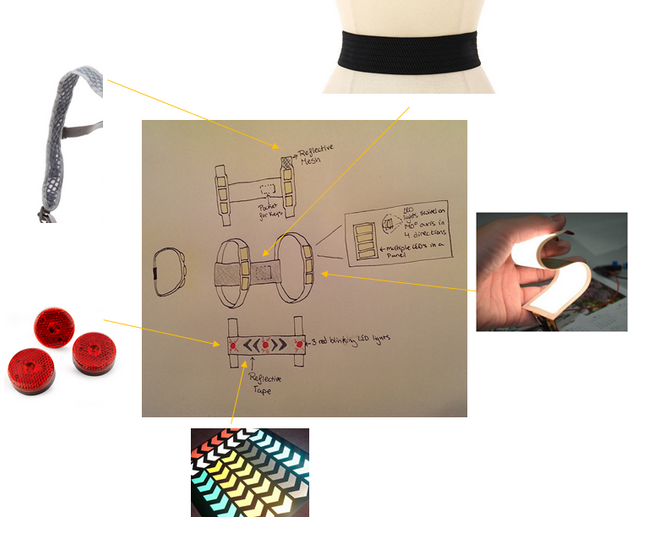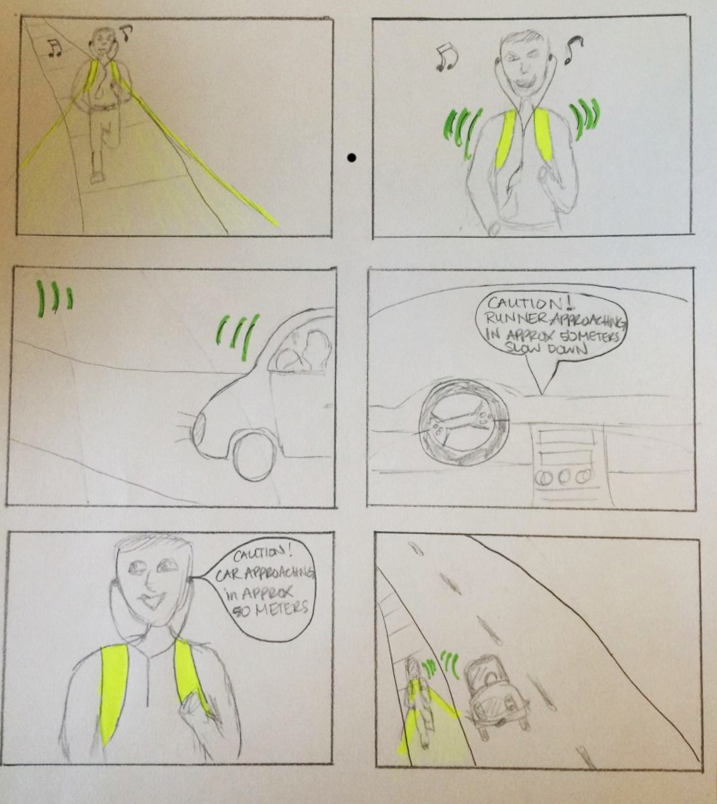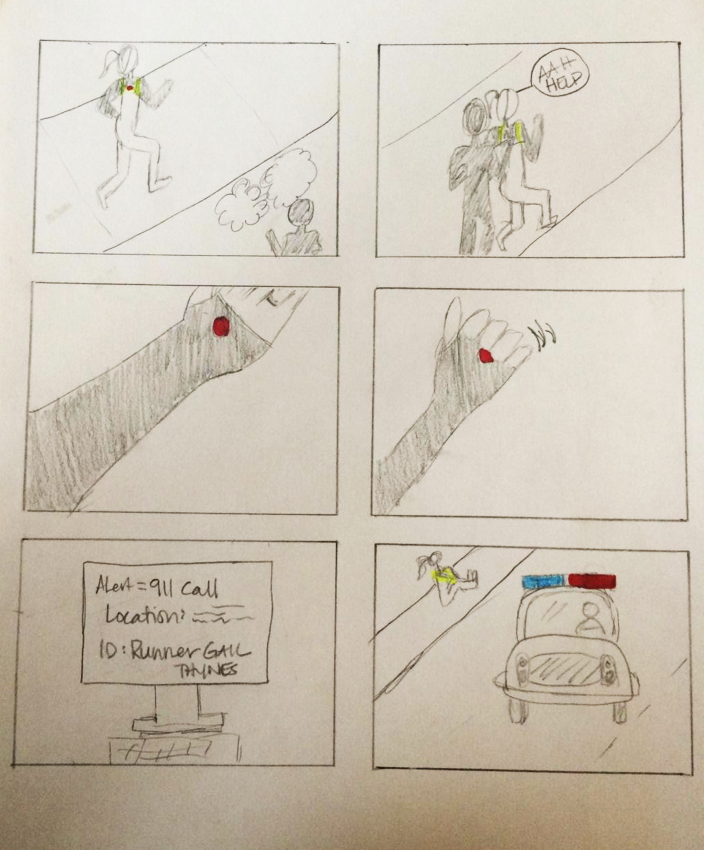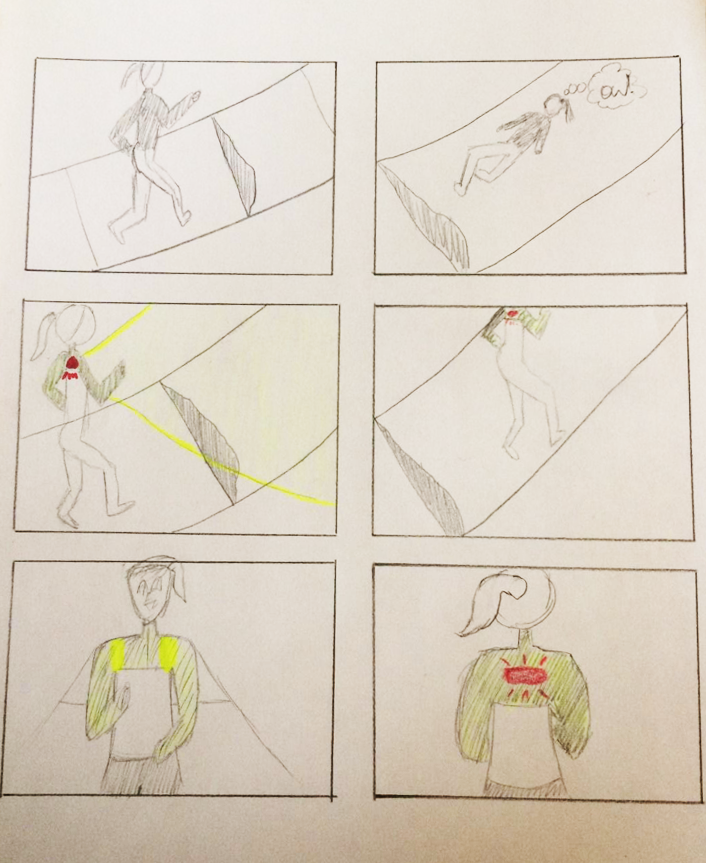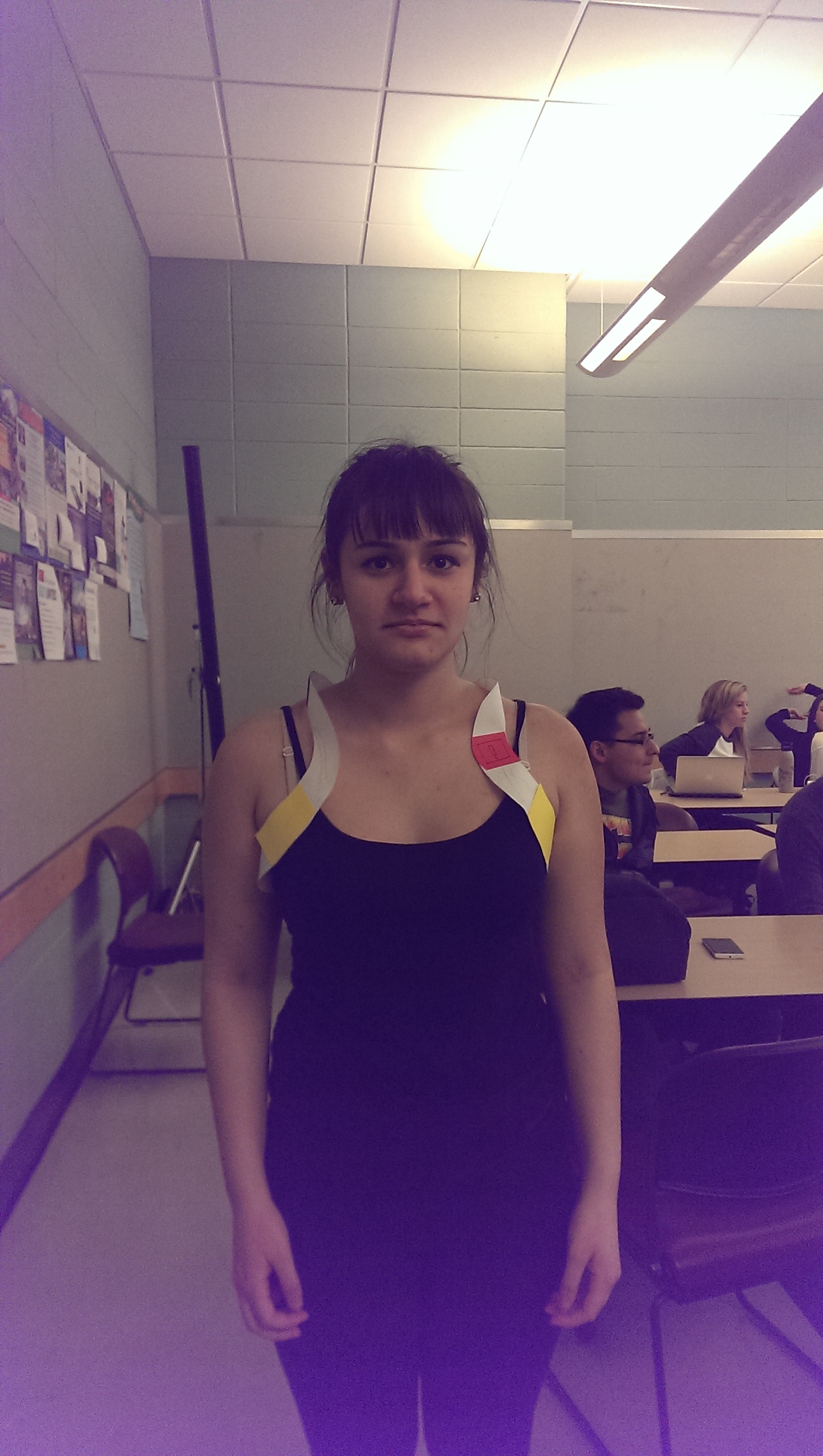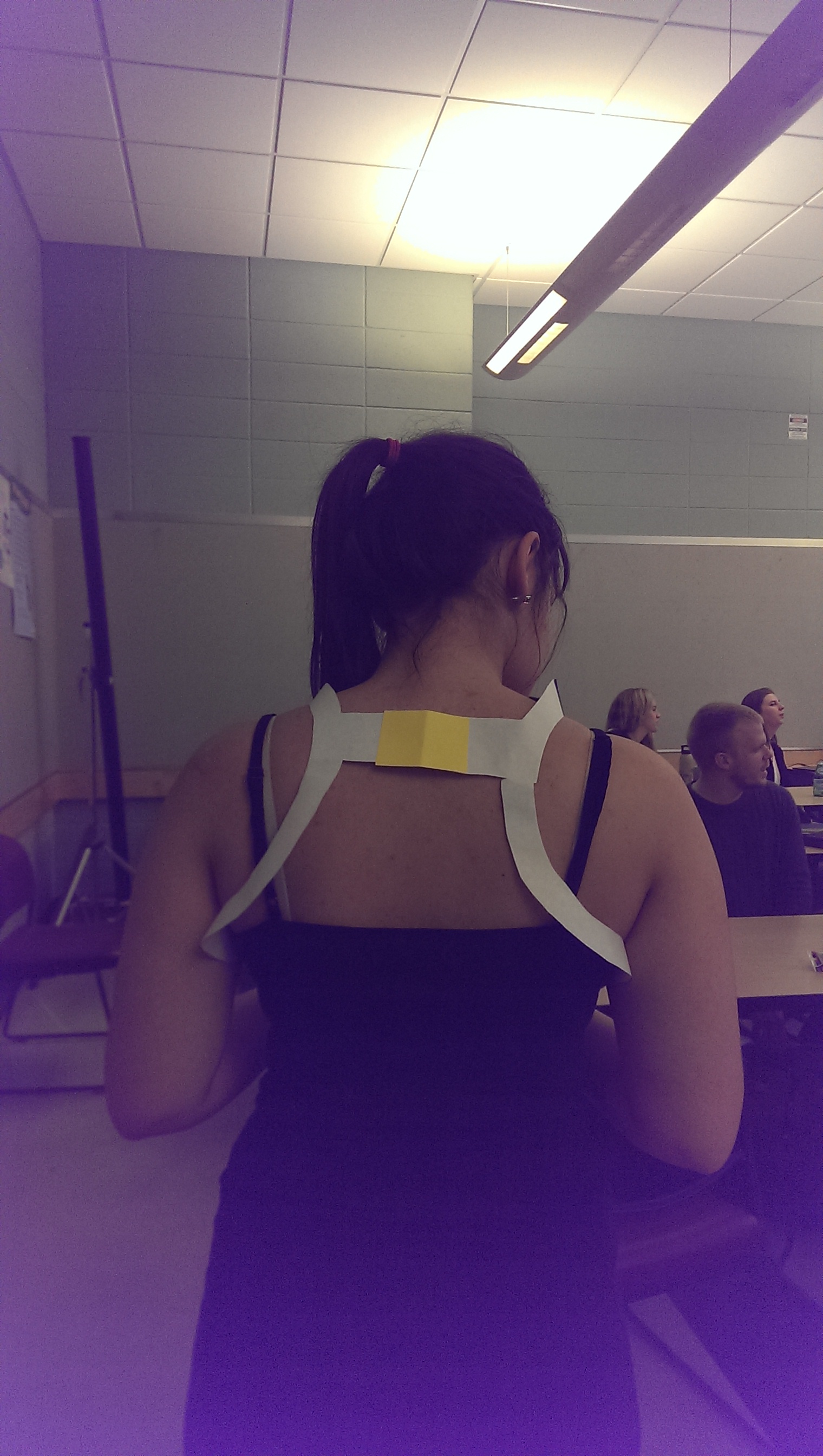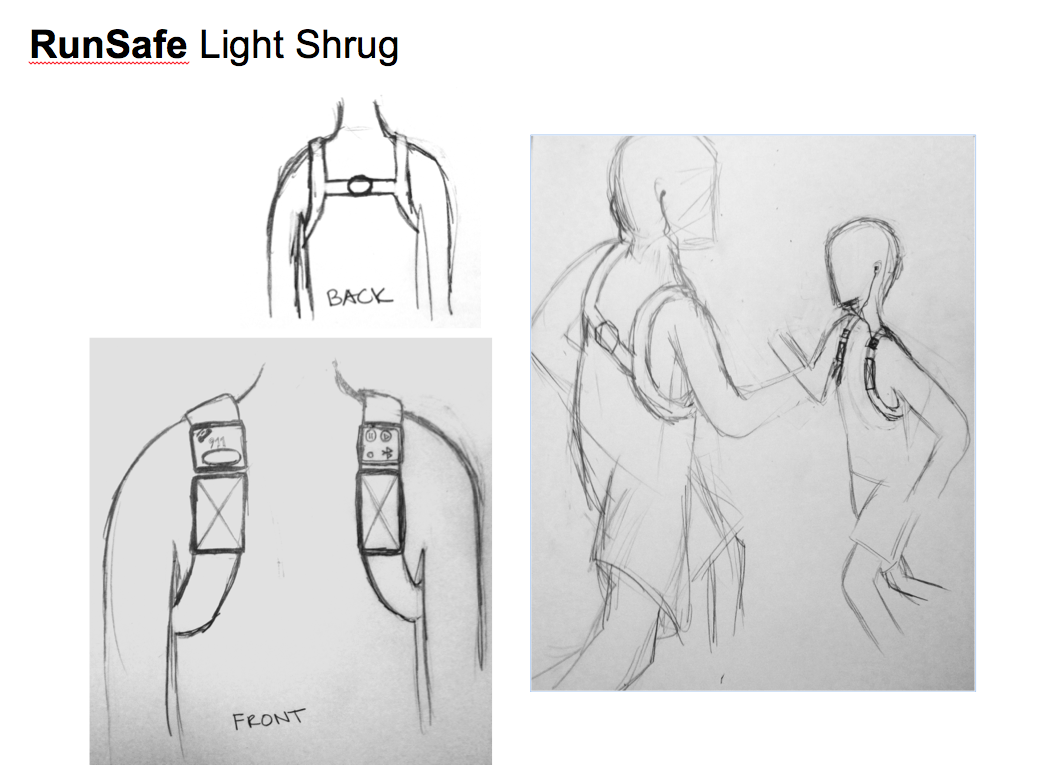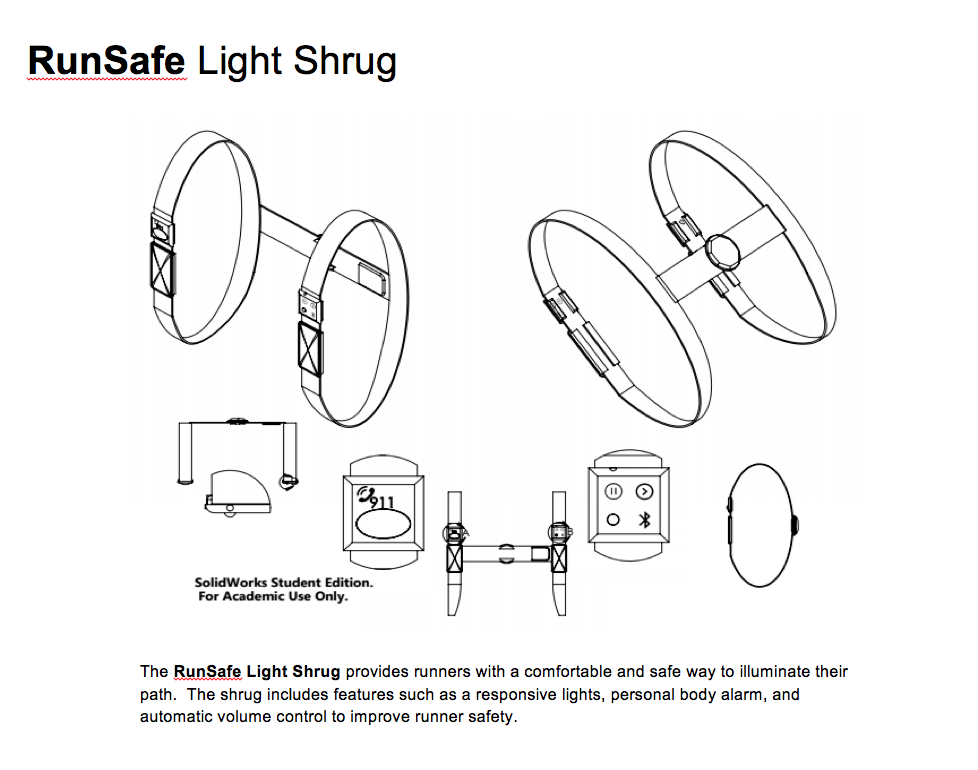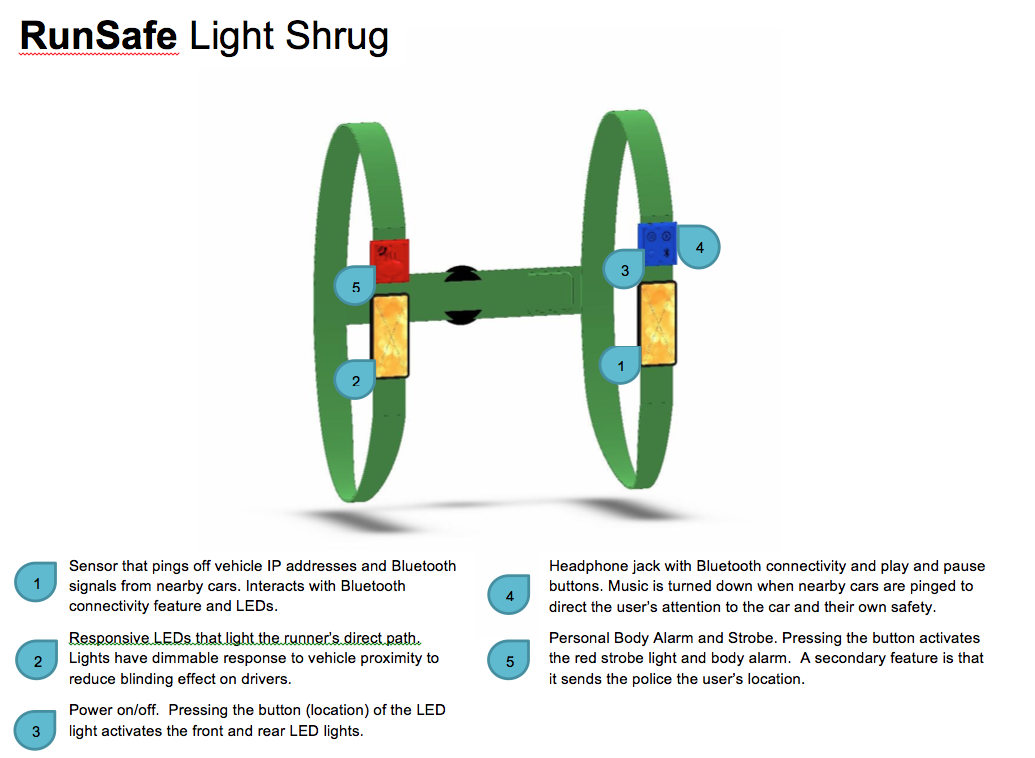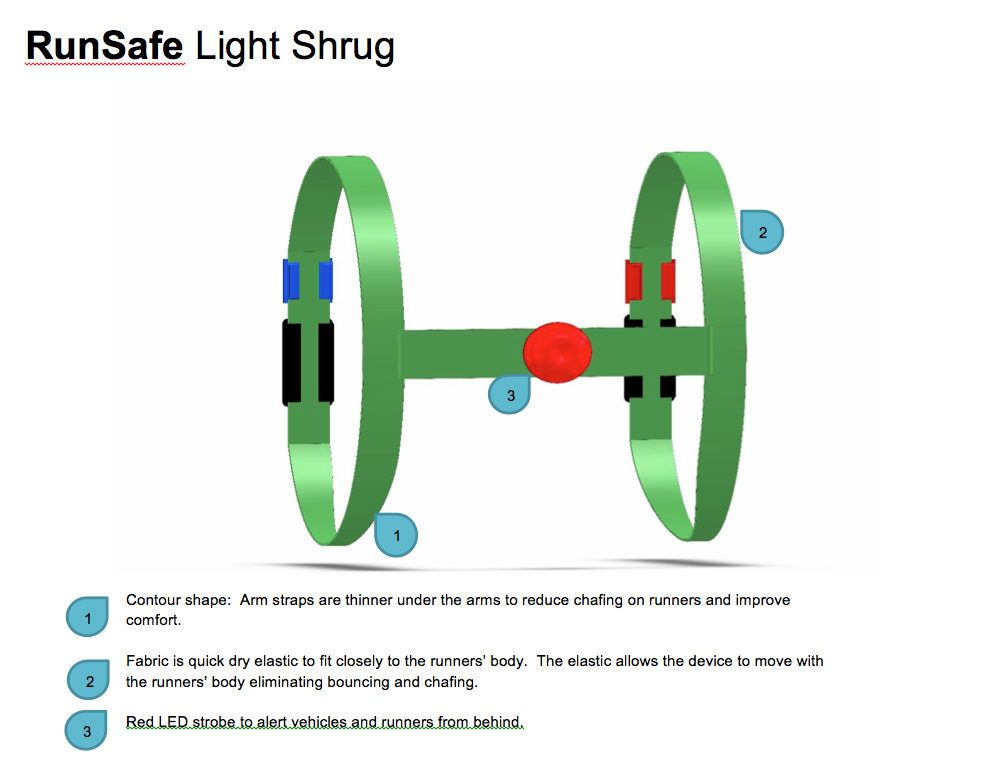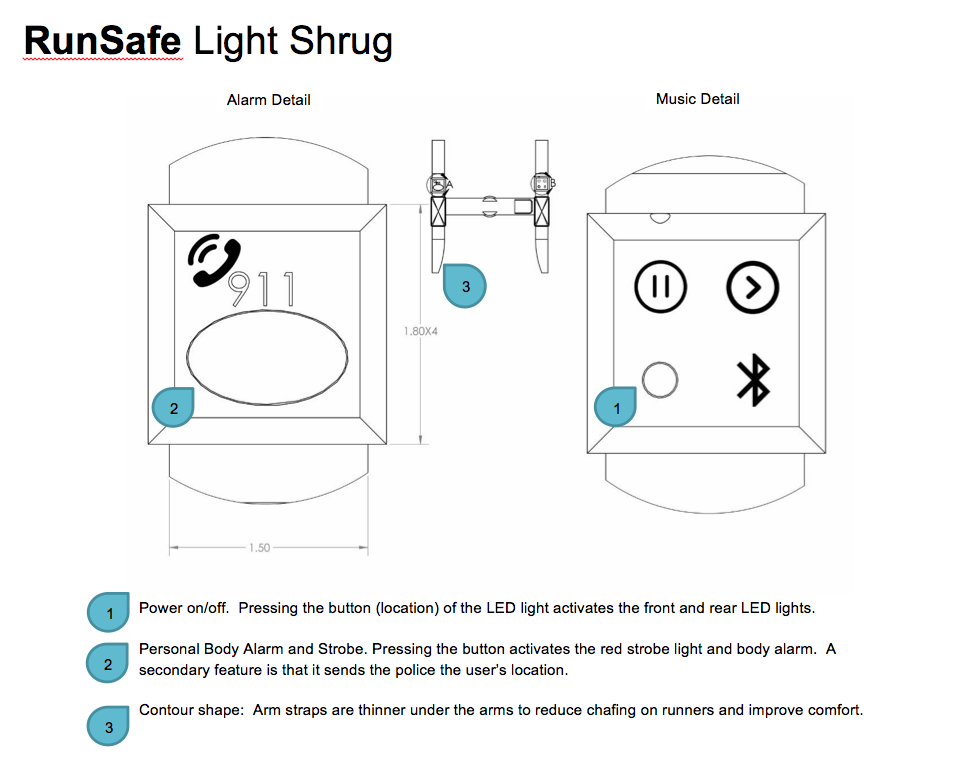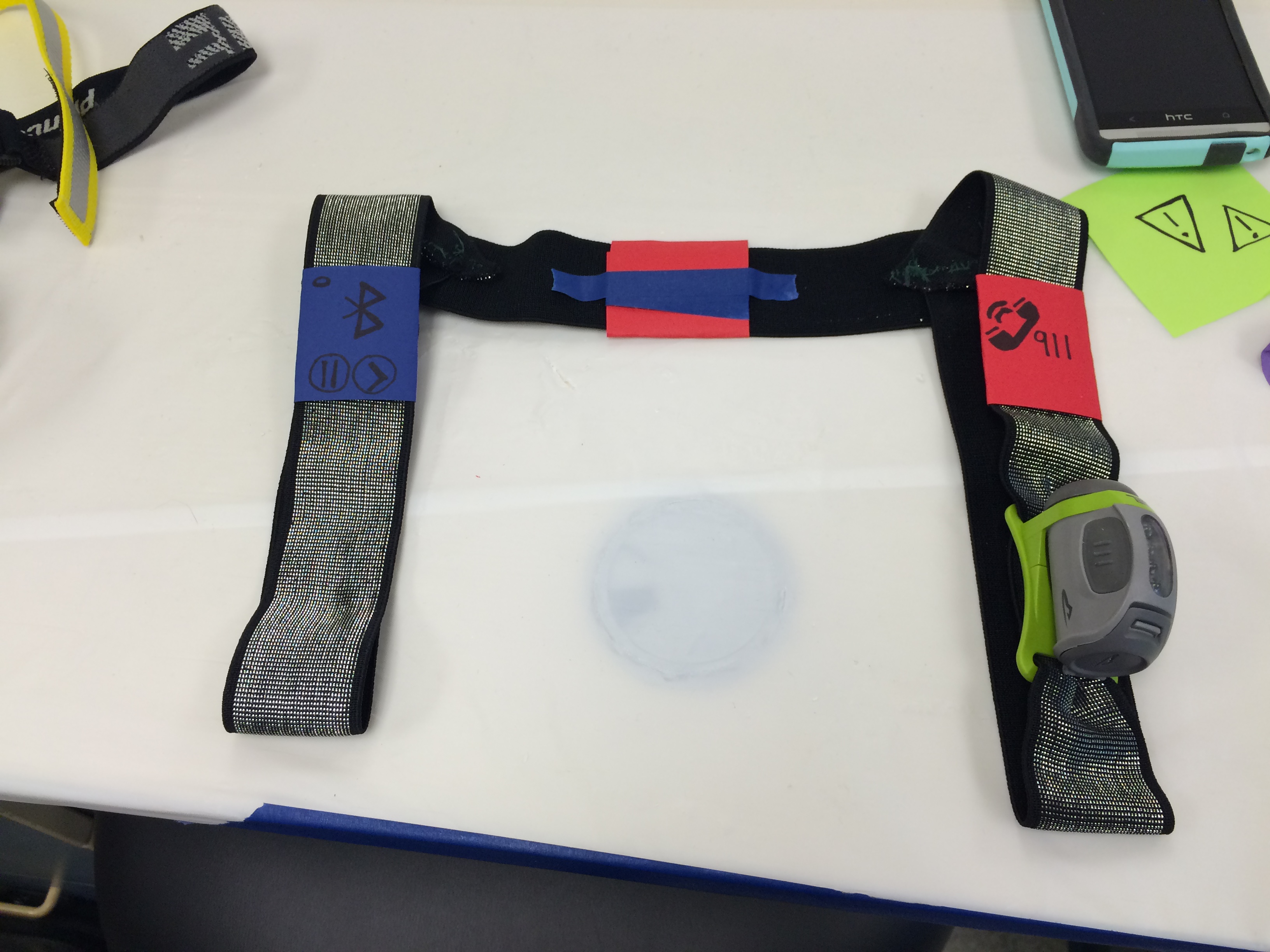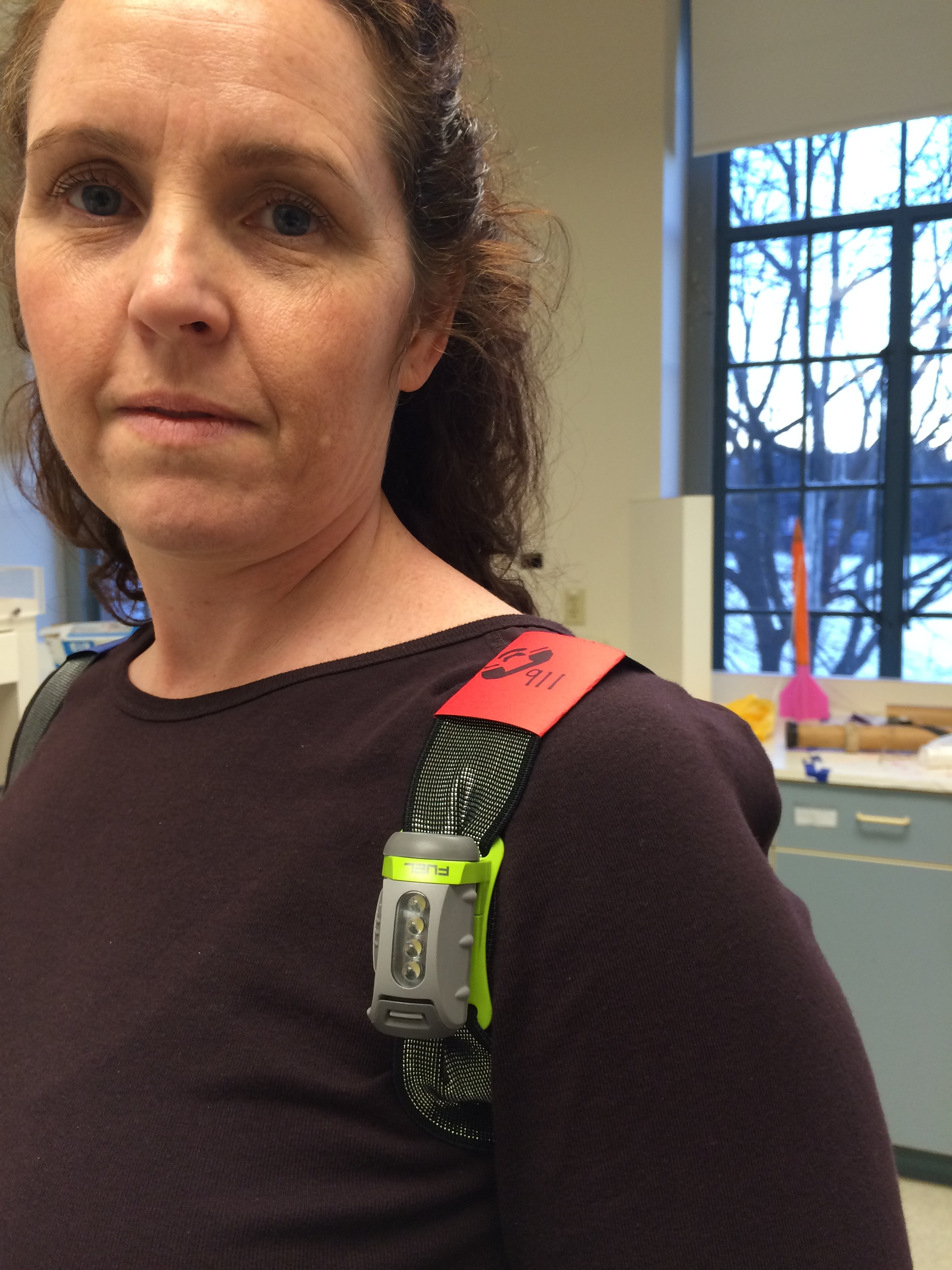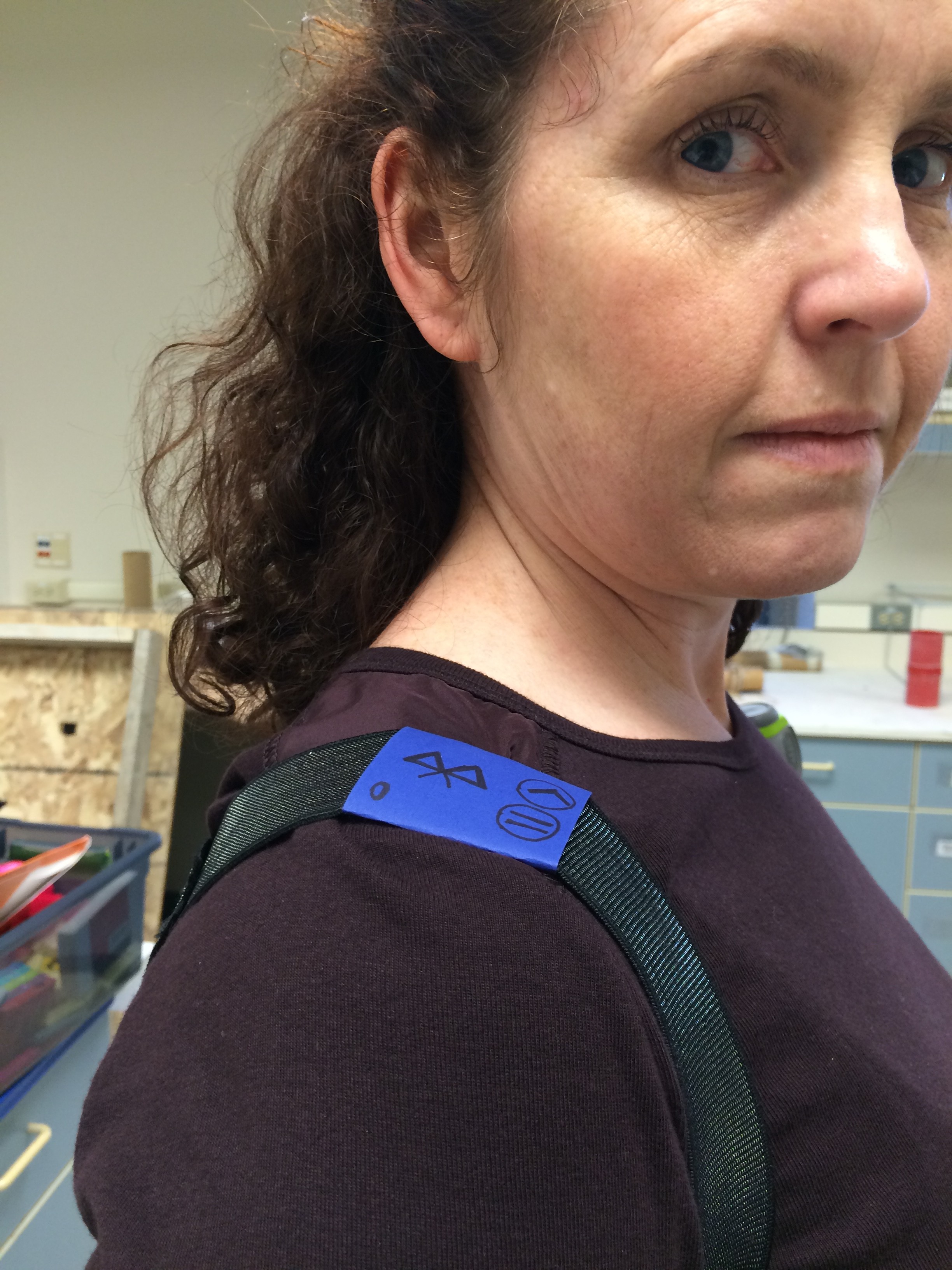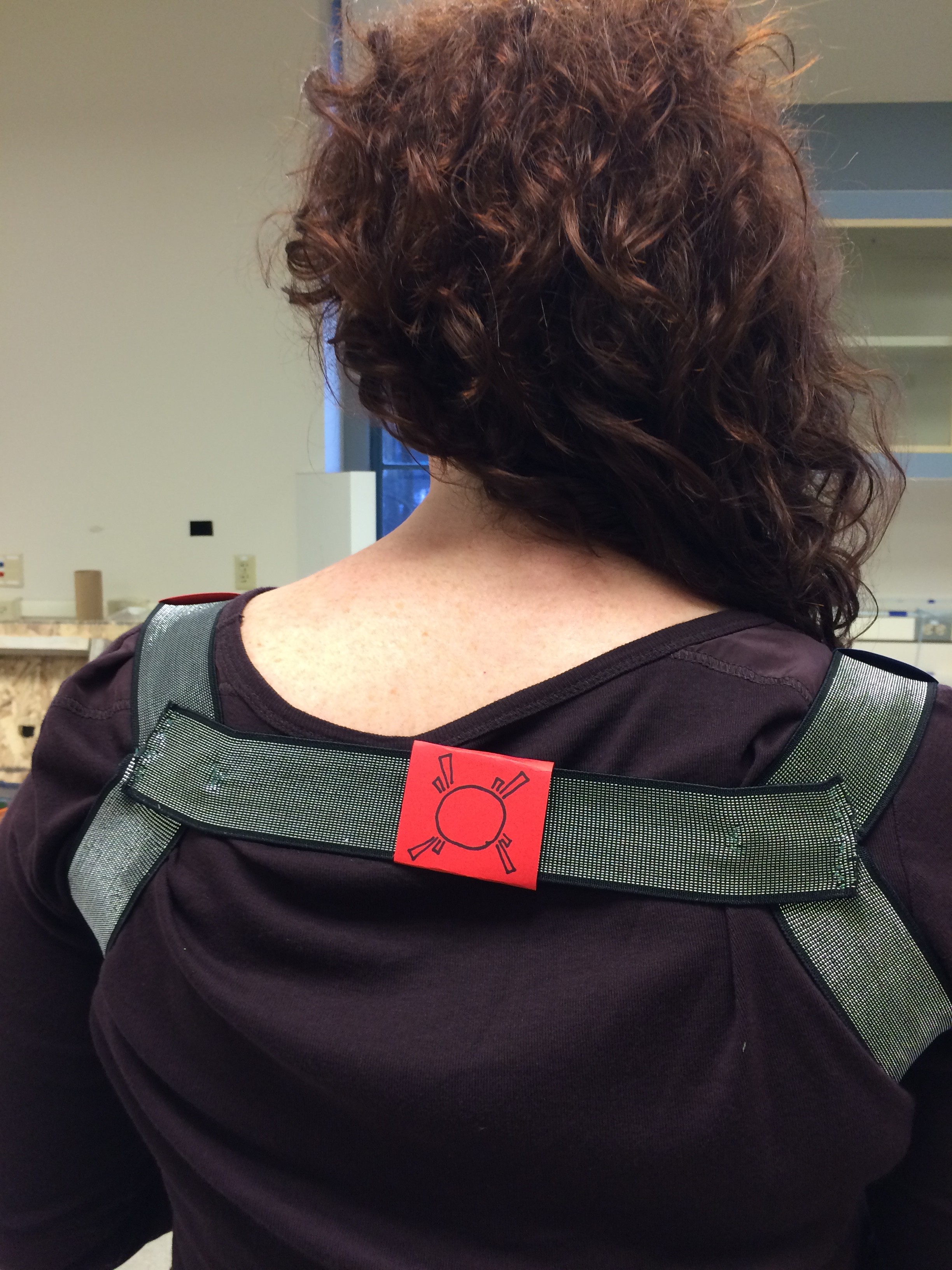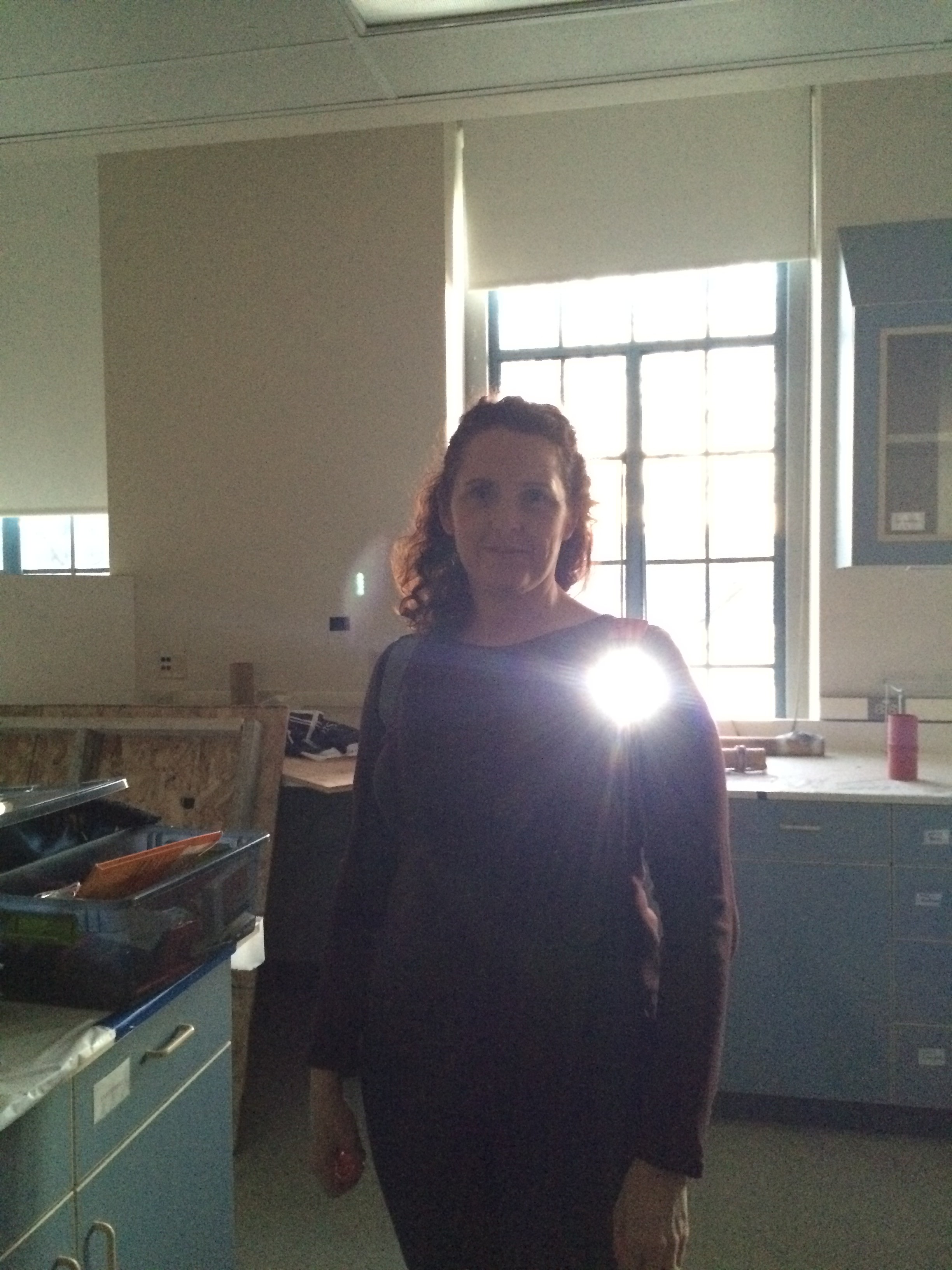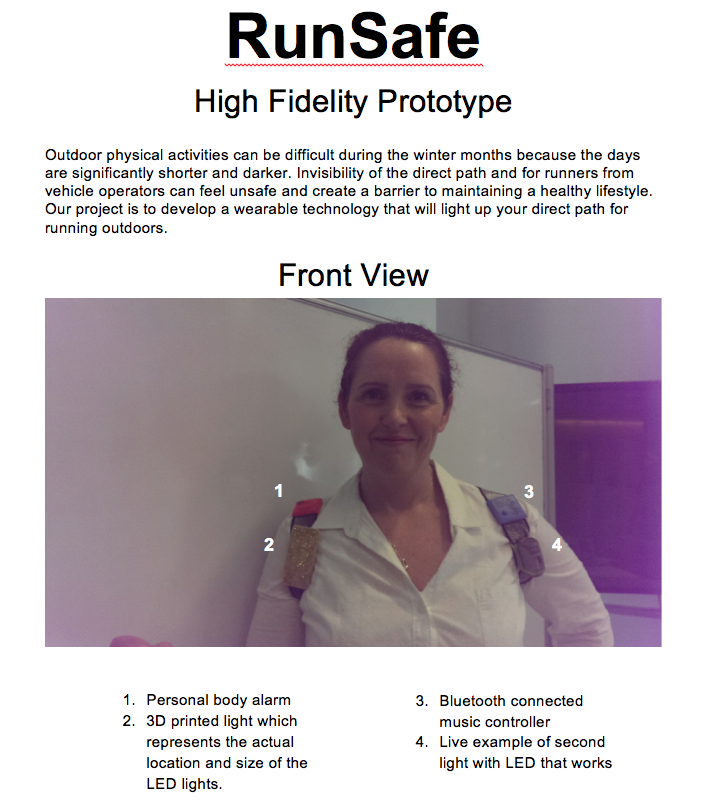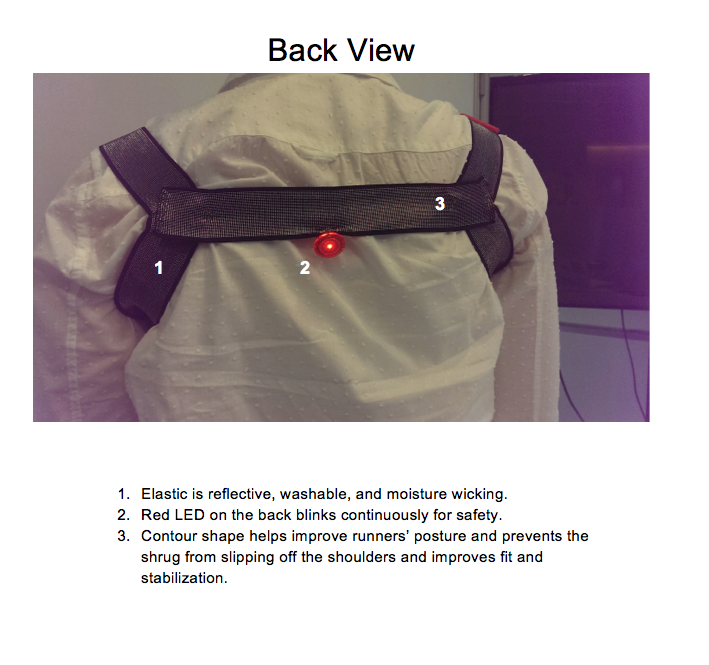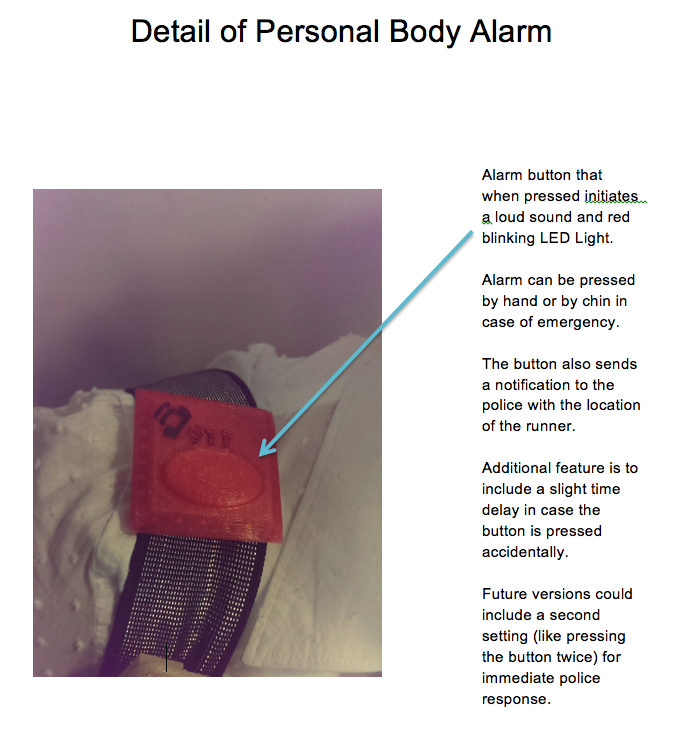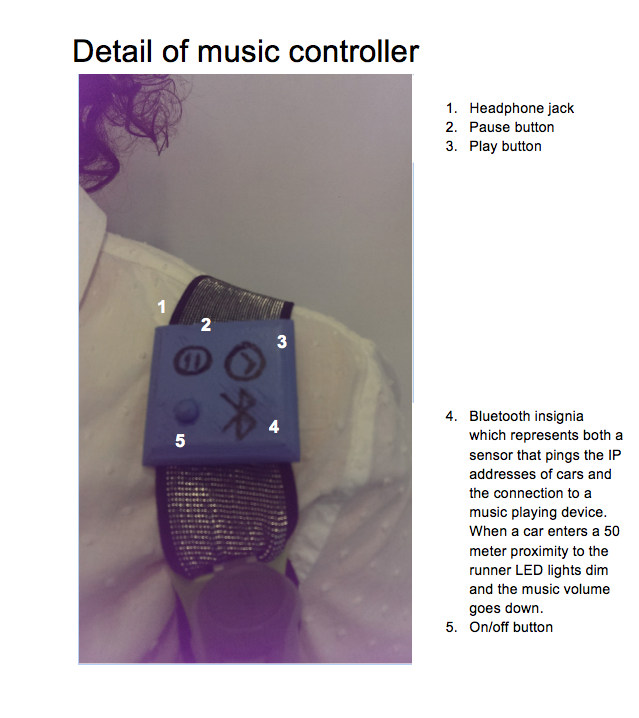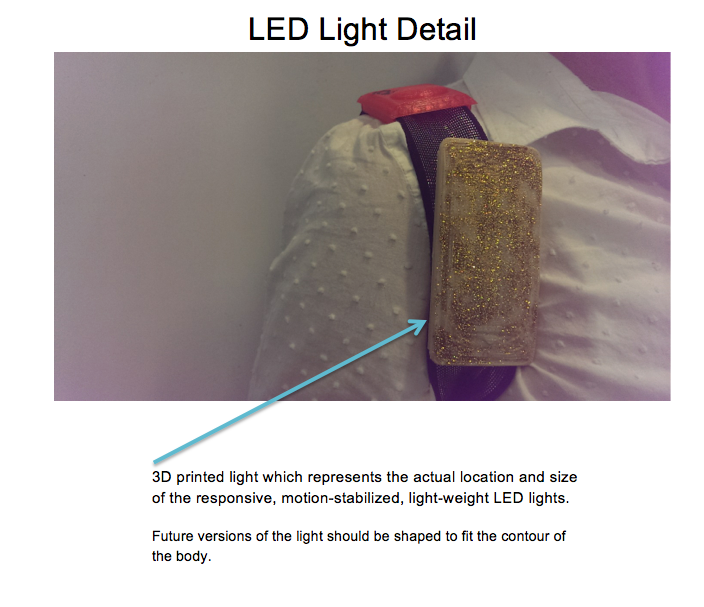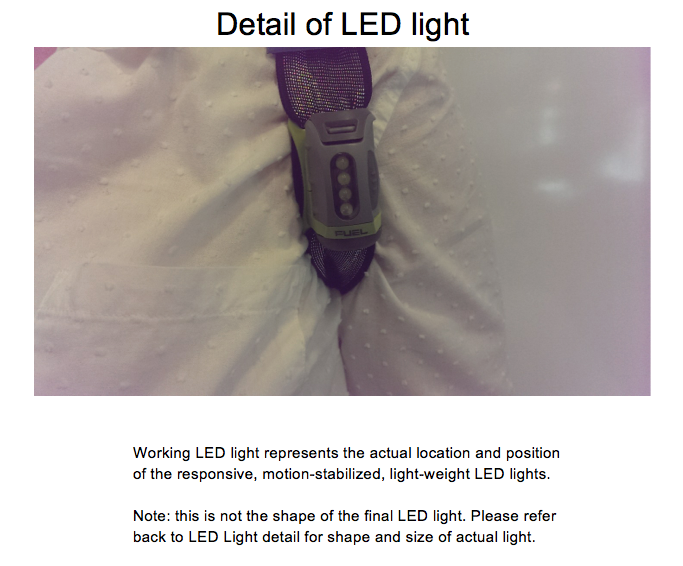DESCRIPTION
Running outside in the dark winter months can be dangerous. Using the User Centered Design process, we created a a prototype for a wearable path limitation device.
MY ROLE + DELIVERABLES
One of three UX Designers on the team, also acted as PM. Delivered Low Fidelity Prototype of concept.
METHODS
User Research, Contextual Interviews, Field Observations, Personas, Usability Testing, Sketching, Survey Design, Storyboarding, Task Analysis, Rapid Prototyping, Paper Prototyping, 3D Modeling, and Wireframing.
TOOLS
Google Forms, MS Word, MS Powerpoint, Solidworks, and Visio.
Our project was a culmination of a quarter long group project in User Experience Design at the University of Washington in Winter 2015. Below is our journey through this project as we define, ideate, research, design, and prototype our solutions.
Problem
Outdoor physical activities can be difficult during the winter months because the days are significantly shorter and darker. Invisibility of the direct path and for runners from vehicle operators can feel unsafe and create a barrier to maintaining a healthy lifestyle.
My Role
My role on the team was Designer. In the research phase, I was responsible for conducting interviews with users and looking into current market trends and emerging technologies that could be applicable. I created the Annotated Wireframes, but Erin created all of the CAD drawings for them. I was also responsible for creating the physical prototype with Erin’s help 3D printing the components. Lastly, I created the High Fidelity Mockups of our design. We all contributed to the content of the process blog, but Erin created the website.
Documents
- Project Detail – PDFtoRuleThemAll
- Annotated Wireframes – WireframesandAnnotations.v2
- High Fidelity Mockup – RunSafe HF Wireframes
Problem
Our project is to develop a wearable technology that will light up runner’s direct path for running outdoors.
Process
Applying the User Centered Design process to this problem, we applied the following phases to our project design.
- Investigative research
- Ideation
- User Research
- Rapid Prototyping
- Usability Testing
Investigative Research
Our initial research focused on trying to understand the problem that runners face when running int he dark. We identified who our target users are. We conducted observations, interviews, and competitive analysis. The deliverable of this phase was two personas.
Target Users
We have several target users: Seasonal runners, and runners that are new to running consistently.
Seasonal runners: They run consistently during the Summer when the daylight is abundant and weather conditions are optimal, but during the Winter months feel unsafe running in the dark early in the morning or after work in the evening.
New runners: They are new to running consistently and may not have the sense of awareness or experience to avoid injury from running on unknown routes or avoiding distracted drivers during the darker hours of the day.
Research findings
Research is the best way to become informed about the current market demands, emerging technologies, and your users. We conducted interviews and in-the-wild observations to gain a better understanding of our users behaviors and needs. We looked into emerging technology in LEDs and fabrics that could be beneficial to runners and their unique environment. We explored a variety of running gear that currently exists and how it could be improved for ideal path illumination. We also conducted a literature to understand the dangers that runners were exposed to.
Observations
Erin conducted observations on the Burke Gilman trail. She chose 3 markers at ~20, ~60, & ~120ft away from her. She plotted the distance a runner became visible in her peripheral vision with the first and most noticeable color they were wearing.
Interviews
Gail conducted four informal interviews with runners who run or used to run in the evening. One interview provided the following information:
- Female, early 40’s, Manager at Amazon, relatively new to running but is a long distance runner (1/2 marathons). Usually runs 3 – 5 days a week.
- What she wears: Her shirt, pants, and shoes, hat and jacket all have reflective qualities. Only wears gloves when extremely cold. She also wears a “blinky thing” on her ankle (technical term she used) and a headlamp. On longer runs, she also carries a reflective water bottle.
- Comments: She is extremely concerned with safety and is willing to pay for equipment that will save her life. There is a limit though, she has seen 100% reflective jackets that cost $400 and weigh a ton – which she’s not interested in.
- Issue with safety about running in dark: Reflective makes her feel more noticed and safer, but doesn’t help with lighting path the headlamp helps with that. Some of the areas near her house are not well lit and she generally doesn’t trust drivers. She sometimes feels that her “get-up attracts more people like moths to a flame”. She fears that drivers are more drawn to her because she is this slow moving glowing and blinking think on the side of the road. She would consider a vest, but doesn’t like it when they are too loose and bounce around a lot.
Competitive Analysis
Anu conducted research on running shoes and other gear. Her most significant finding is that there is a running culture, or some sort of community or mutual understanding between runners. There are a wide variety of running shoes alone that are built for different running needs, people share their experiences with running over social media, and people are interested in learning and discussing better techniques, either to reach a personal fitness goal (example: a faster time), or to prevent injury. I think we would need to have a comprehensive understanding of this culture before we begin to design our wearable technology. We were uncertain if this culture exists for runners who are new to the sport (which is our primary user), or if it only exists for habitual or intense runners.
Personas
Personas are a way of characterizing our primary and secondary user groups into single characters. We created our personas to act as a guide for making design decisions throughout our process.
Jami is a year-round runner and running is a lifestyle for her. Eli is new to running and is trying to fit running into his schedule year round. Both personas have the goal of being safe. Most of their pain, goals, etc are based on direct feedback from users or observations.
We can say with certainty that safety is a primary objective for both of them because of research presented in Human Factors: The Journal of the Human Factors and Ergonomics Society on the visibility of pedestrians at night. Additionally, through our interviews and research on running gear, we found that newer runners don’t always have gear for safety whereas continuous runners are more in the loop about technical gear, especially in regards to what works with their body.
Ideation
Our ideation phase consisted of team brainstorming session, where we each sketched 5 ideas for consideration. We conducted a survey to help target our ideation, and then developed storyboards for the how our ideas would be used.
Design Sketches
Sketching individually and as a group is a great way to come up with multiple designs without getting stuck on one idea. For our group, we were able to sketch three fantastic permutations of solutions to our design problem.
The idea we decided to prototype is the running shrug. During our initial research phase, we observed that the most visible part of runners in low lighting is their chest and torso region. Having a device placed in that region gives the runner an advantage in being visible to others. Additionally, we decided to place the device around the shoulders because it shows the width of the runner, which is key to visibility, and it is one of the most stable areas of the body in motion, thus the lights that illuminate the path do not swing back and forth as much.
For this design, we would use flat panel LEDs that track motion and swivel on an axis to keep the path of illumination stable. Additionally, the back of our device would have red blinking LEDs, which have been proven to be the most visible at night for tracking runners. The entire product is covered in reflective tape and mesh, so if the lights are not on, the runner is still visible to moving vehicles.
User Research
Survey
We surveyed 200+ runners around the world about their running habits in the dark, what features they would like to see on our device, and what form our device should take.We were able to create the following respondent expectations from the data:
- Personal Security and Well Lit/Even Paths are the most important issues for respondents.
- Time is an issue. Respondents run in the morning or night because it works with their schedule.
- In regards to personal security, some respondents wanted preventative measures while others wanted tools to protect themselves.
- Many respondents like using headlamps but are looking for a solution that diffuses the light better or is more lightweight.
- A fair number of respondents do not like headlamps because they are heavy and bounce. Many of these people wanted a solution for the chest and waist area. Others wanted lighting anywhere else on the body.
- Quite a few respondents wanted running buddies or organized groups to run with at night. Others said it was the only way they would run at night.
- Some respondents valued stylish or lightweight reflective gear that was better than current products. Others valued affordable reflective gear and lights.
- One respondent admitted to being a vampire.
Storyboards
Storyboards served as a great tool for envisioning all the different scenarios our users may encounter while wearing our product, as well as what interactions with the shrug would look like in these scenarios. Our storyboards also prompted us to think further about what our design might look like, and was a valuable precursor to our paper prototype.
Rapid Prototyping
Our rapid prototyping phase was partnered closely with user research. We conducted tests on each phase of our prototype development. We began with paper prototypes ad increase fidelity as time allowed.
Sitemap
Creating this sitemap was not particularly demanding, as some components of our product simply have a state of on or off, however, it was still very valuable for us in terms of organizing our thoughts for our design moving forward. Our sketches helped us come up with potential ideas, the survey helped us narrow down what design we would be going with, the map helped us think about what interactions would be built into the design we decided on, and the subsequent storyboards helped us really envision what it would be like for the user to interact with our product. All of this served as a really good foundation for starting our prototyping process.
Paper Prototype
Making the paper prototype was valuable for us because this was the first physical iteration of our conceived design for the product itself. We even ran guerilla user research on it and received positive feedback over all. This helped us test our product design rather than our user experience design. This prototype was not incredibly helpful with communicating the different possible states of the product.
Annotated Wireframes
Annotated wireframes are an ideal way to document interactions with the interface of a design. Since we are creating a physical product, we took an industrial design approach for our assignment using sketches for context and CAD drawings to show the dimensions of the components.
We participated in a peer design review with our Annotated wireframes and received some valuable feedback and questions that we had considered. Most feedback fell into one of four categories:
- Concern about Personal Alarm and 911 button
- Customization of fit and components
- City use and proximity features
- Future features and unintended use
Low-fidelity Mock-up
High-fidelity Mock-up
For our high fidelity mockup we used feedback from our Annotated Wireframes peer review to modify the previous physical prototype of RunSafe. In this iteration we used the files from the CAD drawings to 3D print most of the components to represent the actual size and location of the buttons. We used a reflective elastic for the straps, but were unable to make them customizable due to time limitations.
Next Steps
The next steps for RunSafe would be to create a video prototype to demonstrate the functionality. We could also create a product brochure with images to illustrate the use cases. Last, we would want to use these to raise funds to continue with another round of user testing and build a functional prototype.
Thank you for taking this journey through our design process with us. We would like to acknowledge Katie Derthick and Saba Kawas for their passionate instruction and guidance, and our fellow HCDE 418 User Experience Design students for their suggestions and criticism. The feedback and support we received was overwhelmingly positive.


